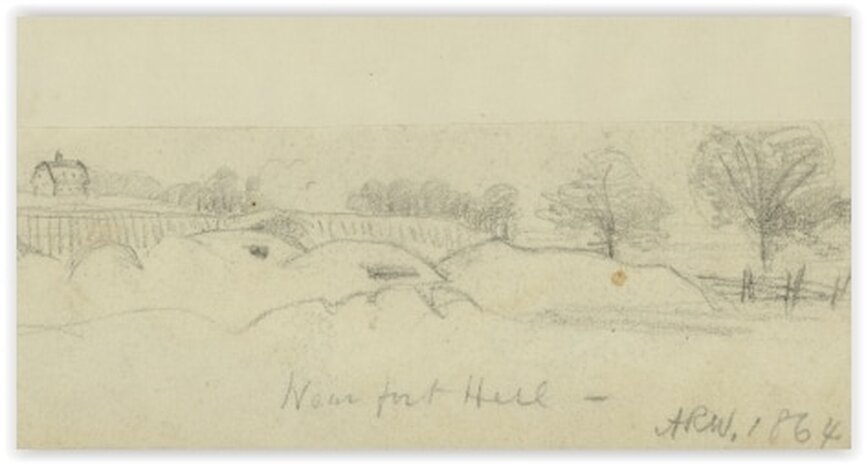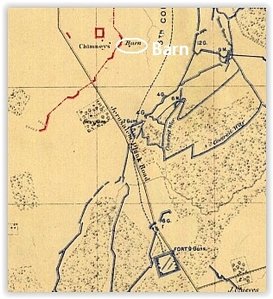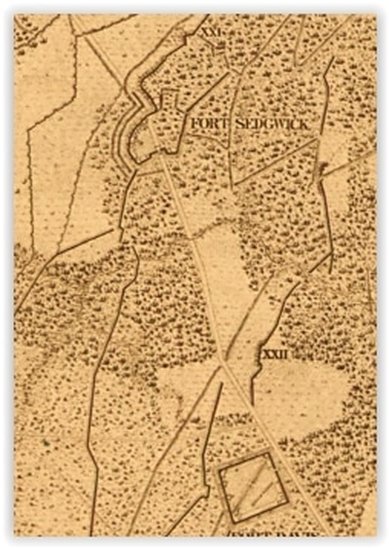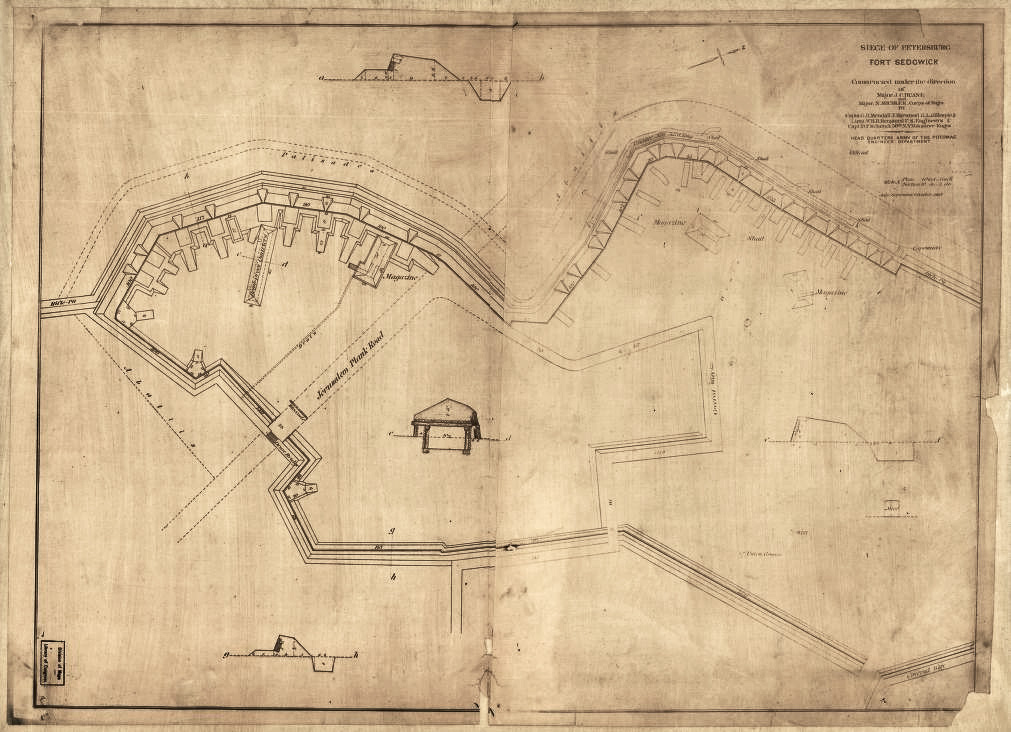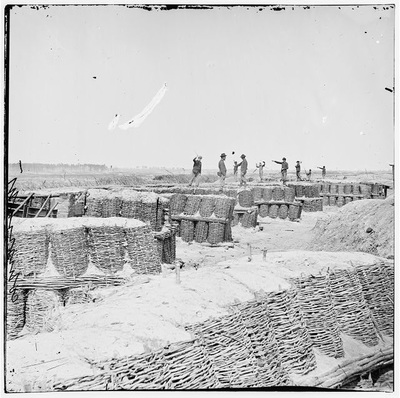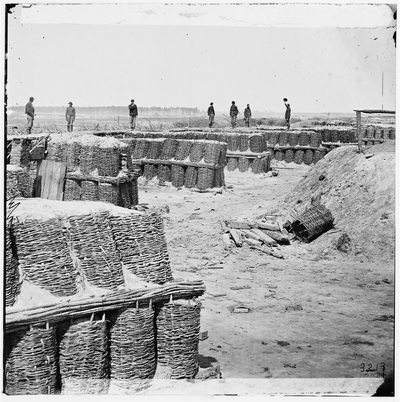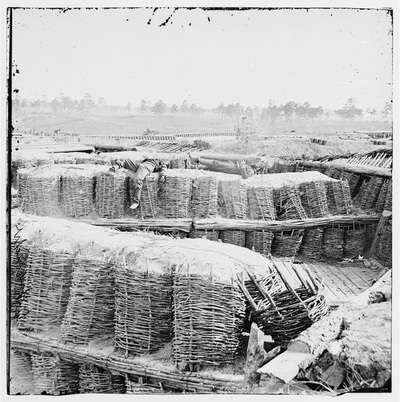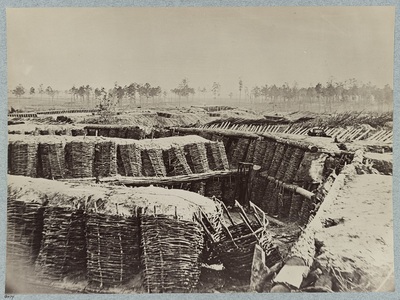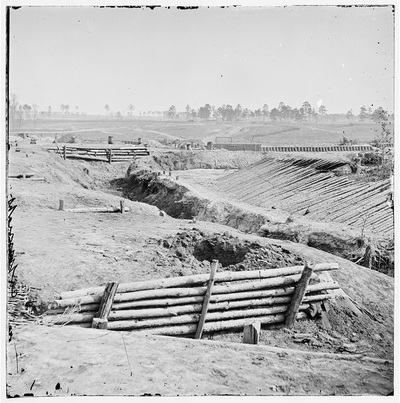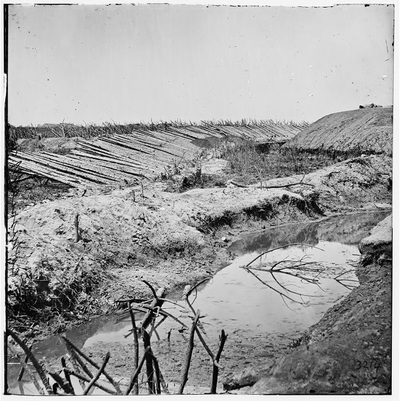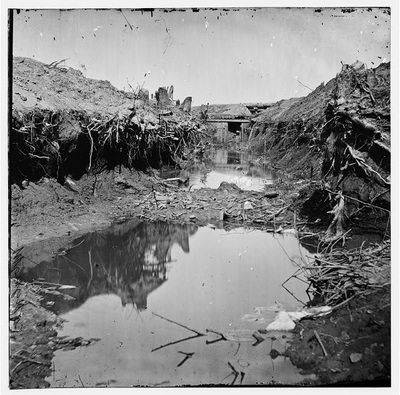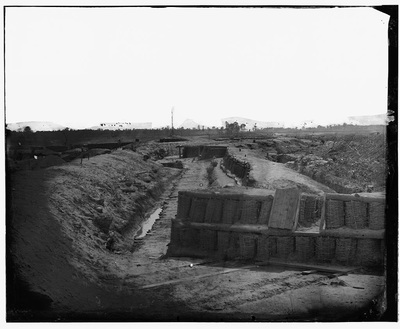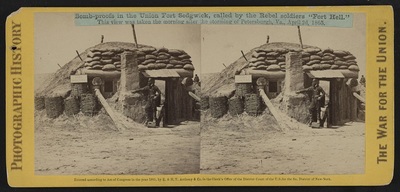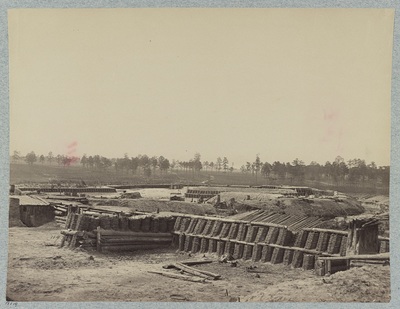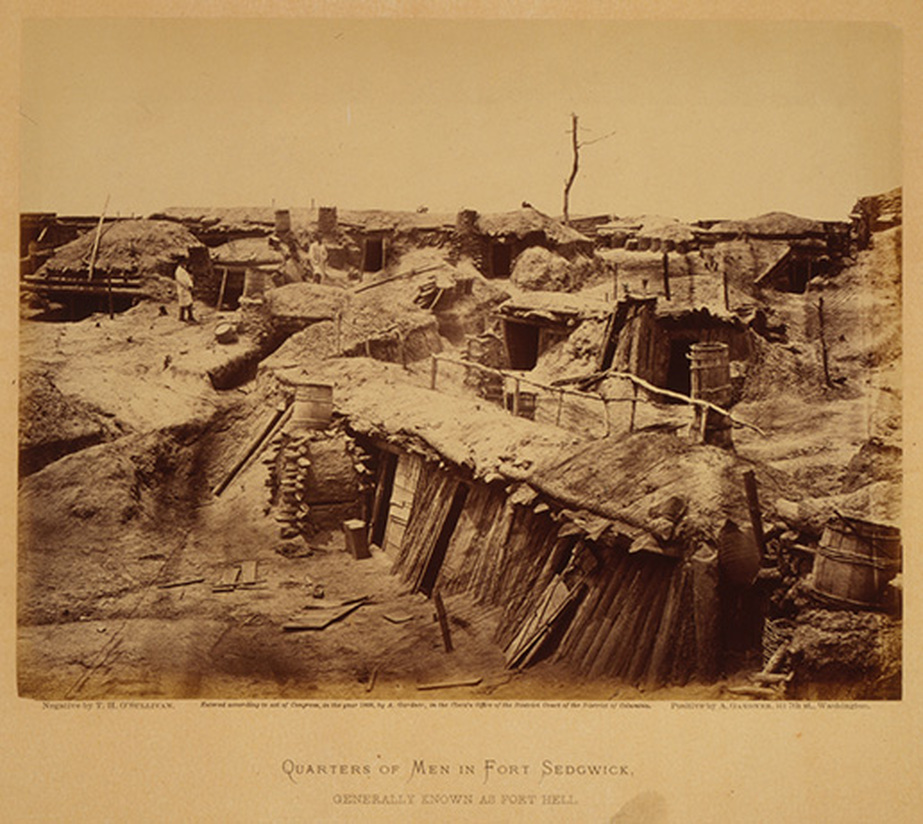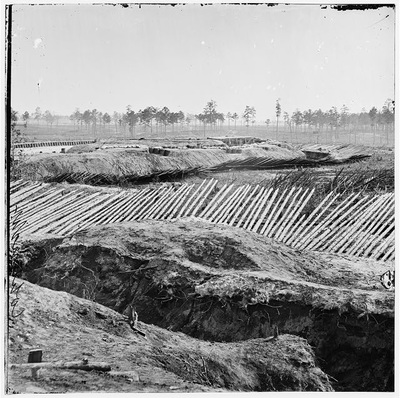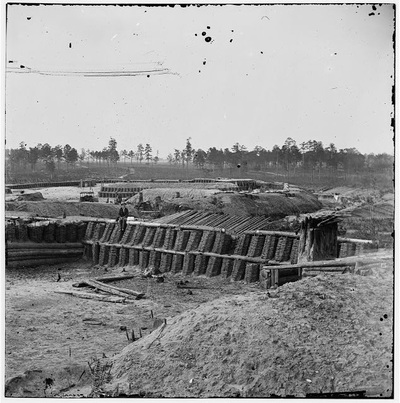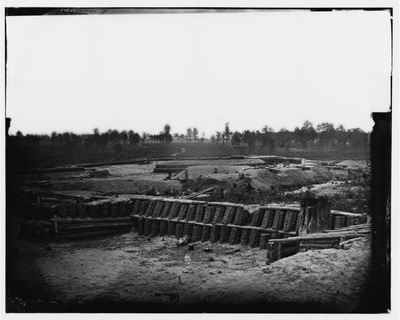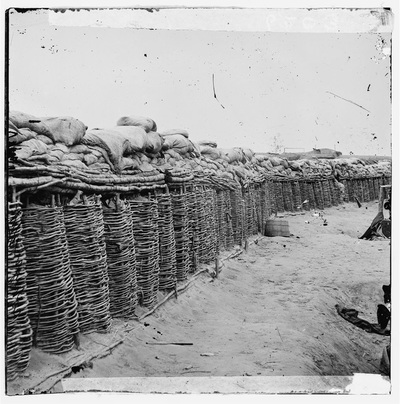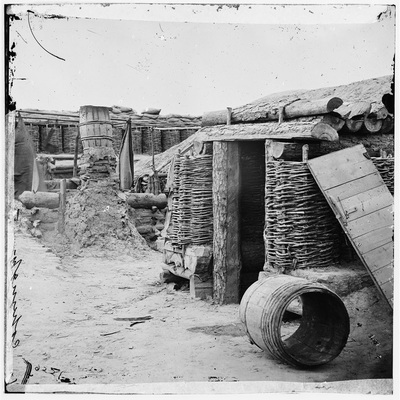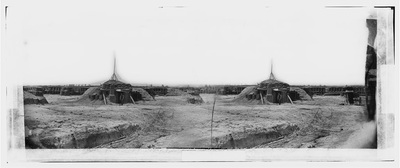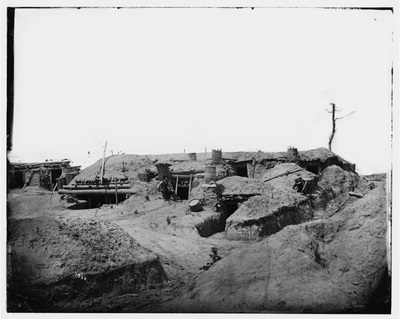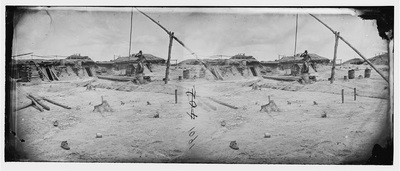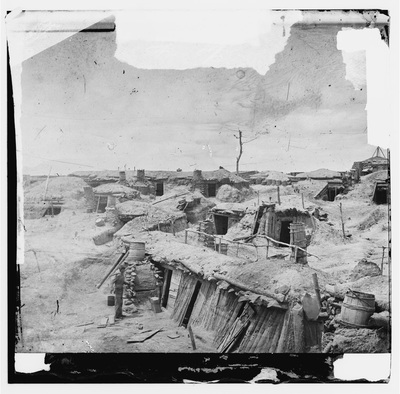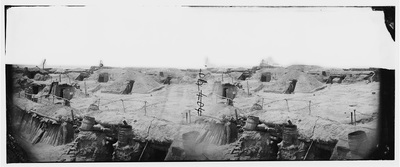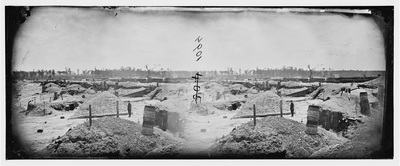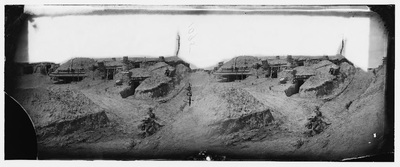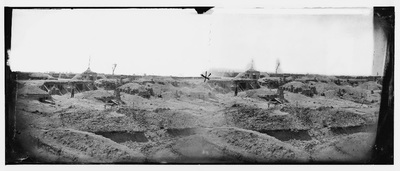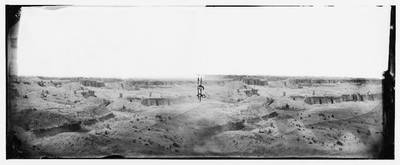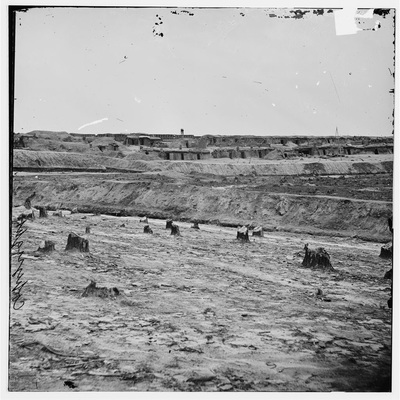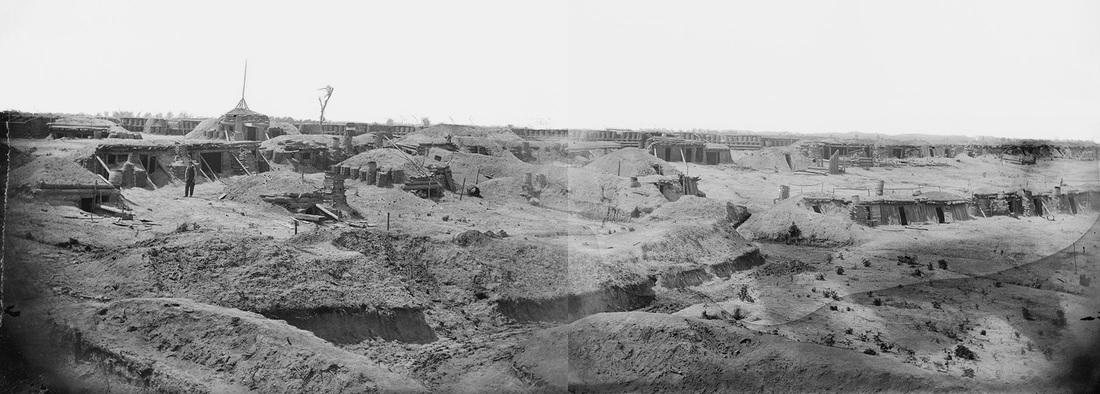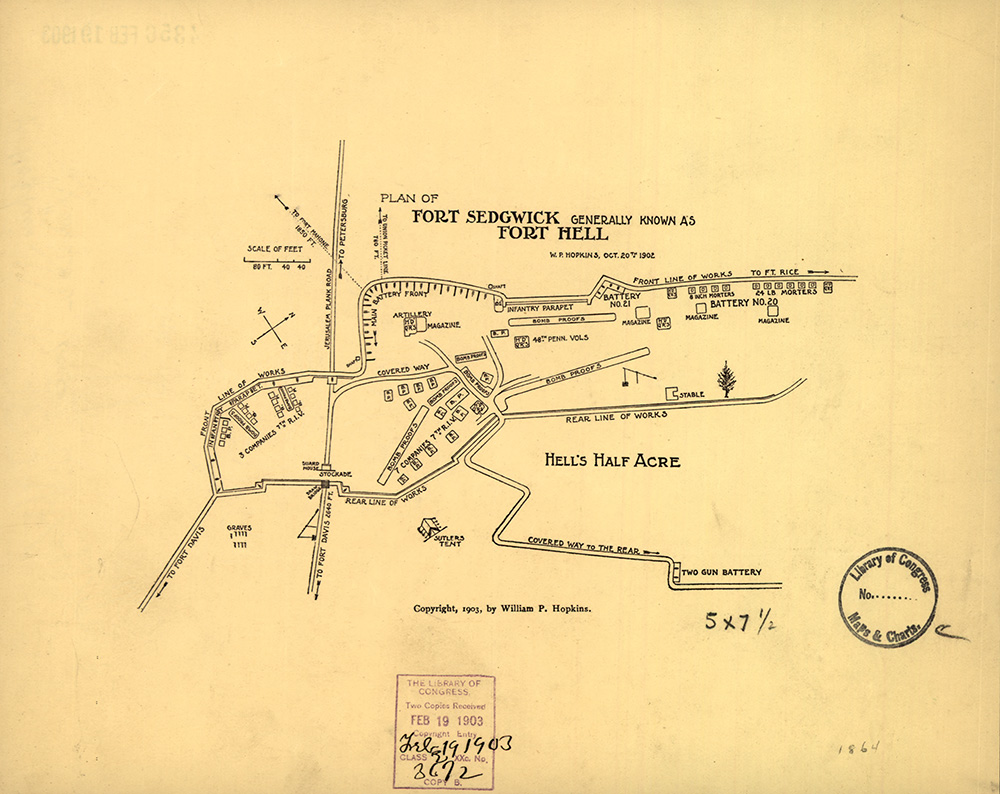FORT SEDGWICK, better known as FORT HELL... and vicinity, early in the siege.
Grand Medicine Pow-wow
"The Rebel in the Road"
Fort Rice?? We don't think so!
Federal Picket Line, Jerusalem Plank Road
Priest Cap

Early version of Fort Hell/Sedgwick as a rectangular redan to the east of Jerusalem Plank Road. Charles Wellington Reed, LC Manuscript Division. Reed's diary and letters make clear that his battery, the 9th Massachusetts, moved into position on the left of the Jerusalem Plank Road on June 24th, "relieving the 6th Maine battery going in to their breastworks" Campbell, "A Grand Terrible Dramma", p233. Reed started his map of the area on June 29 and continued to update it as Fort Warren (eventually named Fort Davis) was not begun until July 6 (Campbell p. 235).
July 19, Tuesday
The engineers have just traced out an irregular work to be enclosed in a corner of the wood close to the plank road: it is within one hundred yards of the rebel pickets at the Gregory chimneys, and having rather an ugly lookout for them is not likely to be put up with as little disturbance as the others have (p. 438).
July 21, Thursday
The new work on the plank road gets on slowly. I was right in my surmise that the rebels would not like it; they make it so hot for the workmen there that it has already been christened Fort Hell by the men (p. 439).
Colonel Charles S. Wainwright, A Diary of Battle, edited by Allan Nevins, DaCapo Press, New York,1998
The engineers have just traced out an irregular work to be enclosed in a corner of the wood close to the plank road: it is within one hundred yards of the rebel pickets at the Gregory chimneys, and having rather an ugly lookout for them is not likely to be put up with as little disturbance as the others have (p. 438).
July 21, Thursday
The new work on the plank road gets on slowly. I was right in my surmise that the rebels would not like it; they make it so hot for the workmen there that it has already been christened Fort Hell by the men (p. 439).
Colonel Charles S. Wainwright, A Diary of Battle, edited by Allan Nevins, DaCapo Press, New York,1998
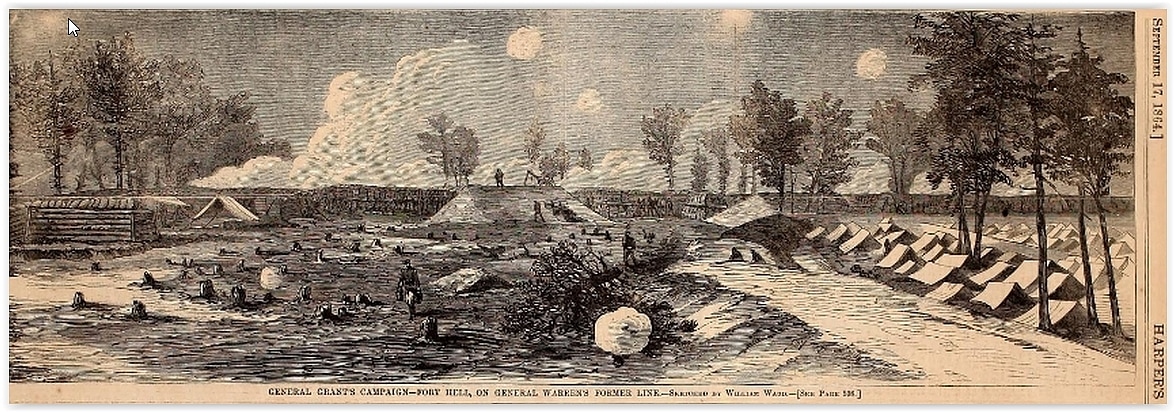 Harper's Weekly, September 17, 1864, William Waud. By mid-September, the fort had been expanded across the road.
Harper's Weekly, September 17, 1864, William Waud. By mid-September, the fort had been expanded across the road.
Photographs and Drawings of Fort Sedgwick, known as "Fort Hell"
|
Fort Sedwick "Fort Hell" -- the most photographed and sketched location on the entire Petersburg front.
|
|

